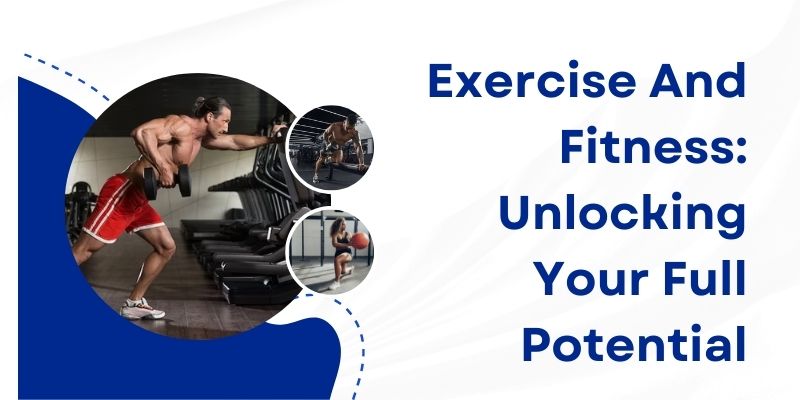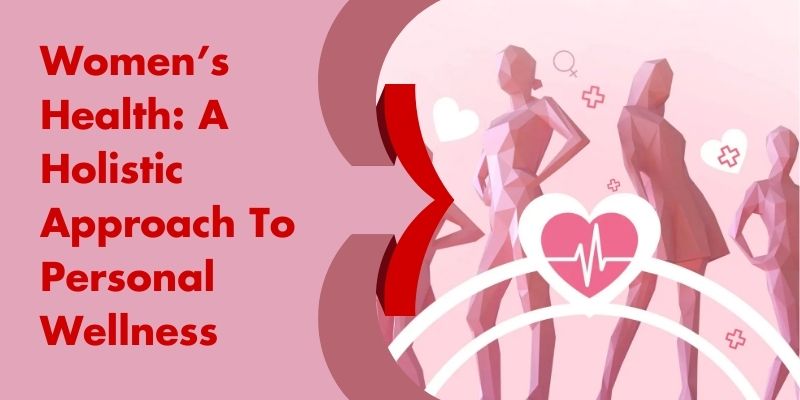In the pursuit of personal wellness, exercise and fitness play a pivotal role. They are not just about transforming your physical appearance but also about fostering mental clarity, emotional resilience, and overall well-being. Whether you are a fitness enthusiast or just starting your journey, understanding the importance of exercise and how to integrate it into your life can lead to profound and lasting benefits. In this article, we will explore various aspects of exercise and fitness, providing you with insights and practical tips to unlock your full potential.
The Importance of Exercise
1. Physical Health
Regular exercise is essential for maintaining and improving physical health. It helps to:
- Strengthening muscles and bones helps reduce the risk of osteoporosis and fractures. Weight-bearing exercises such as walking, jogging, and strength training are particularly effective in building bone density.
- Enhance cardiovascular health by boosting heart and lung function. Activities like running, cycling, and swimming can help lower blood pressure, reduce bad cholesterol levels, and increase good cholesterol.
- Enhance flexibility and balance, which are crucial for preventing injuries and maintaining mobility as we age. Practices such as yoga and Pilates can improve joint range of motion and muscular balance.
- Boost immune function by increasing the circulation of immune cells that help fight off infections. Regular physical activity can reduce the incidence of colds and other common illnesses.
- Aid in weight control by increasing metabolism and burning calories. Combining aerobic exercises with strength training can maximize fat loss while preserving lean muscle mass.
2. Mental Health
Exercise greatly influences mental well-being. It can:
- Reduce symptoms of anxiety and depression by promoting the release of endorphins, the body’s natural mood elevators. Exercise can be a powerful tool in managing mental health conditions, complementing traditional treatments.
- Enhance mood and energy levels by stimulating the production of neurotransmitters like serotonin and dopamine. These chemicals play a crucial role in regulating mood, motivation, and overall energy.
- Enhance cognitive function and memory by boosting blood flow to the brain. Exercise has been shown to enhance neuroplasticity, the brain’s ability to adapt and form new neural connections.
- Foster better sleep patterns by regulating the sleep-wake cycle. Engaging in regular physical activity can help you fall asleep quicker and achieve deeper, more restorative sleep.
3. Emotional Well-being
Engaging in physical activities can also enhance emotional well-being by:
- Increasing self-esteem and confidence through the accomplishment of fitness goals. Achieving milestones, whether big or small, can boost your sense of self-worth.
- Reducing stress and promoting relaxation by lowering cortisol levels, the body’s primary stress hormone. Activities like yoga, tai chi, and meditation can be particularly effective in stress reduction.
- Providing a sense of accomplishment and purpose, which can be particularly valuable during challenging times. The discipline and routine of a regular exercise regimen can provide structure and a sense of control.
Types of Exercise
1. Aerobic Exercise
Also known as cardio, aerobic exercise involves activities that increase your heart rate and breathing. Examples include:
- Running or jogging, both of which can be done outdoors or on a treadmill. These activities are effective for building endurance and cardiovascular health.
- Whether indoors on a stationary bike or outdoors, cycling is a great option. It’s a low-impact exercise that can be adjusted for different fitness levels.
- Swimming provides a comprehensive workout and is gentle on the joints. It’s an excellent option for individuals with arthritis or other joint issues.
- Dancing, which can be both fun and a great workout.
2. Strength Training
Focusing on building muscle mass and strength, strength training includes exercises like:
- Weightlifting, which can involve free weights like dumbbells and barbells or machines at the gym. It’s important to learn proper form to prevent injuries.
- Resistance band exercises, which are versatile and can be done anywhere. These bands come in different resistance levels, making them suitable for beginners and advanced exercisers.
- Bodyweight exercises (push-ups, squats), which require no equipment and can be done at home. These exercises can be adjusted to make them more or less challenging.
3. Flexibility and Stretching
Improving flexibility can enhance your range of motion and prevent injuries. Activities include:
- Yoga combines postures, breathwork, and meditation to improve flexibility, strength, and mental clarity.
- Focusing on core strength, flexibility, and body conditioning, Pilates is a great workout. It often uses specialized equipment but can also be done with just a mat.
- This type of stretching requires holding a position for a certain duration. This can be done after a workout to help muscles recover and prevent stiffness.
4. Balance and Stability
Balance exercises are essential, particularly as we get older. They help in:
- Preventing falls, a leading cause of injury in older adults, can be achieved through balance exercises that enhance coordination and stability.
- Enhancing coordination, which is important for everyday activities and sports. Improved balance can also enhance athletic performance.
- Stabilizing core muscles, which support the spine and improve posture. A strong core is essential for overall fitness and can prevent back pain.
Examples include:
- Tai Chi, a martial art with slow, controlled movements, can enhance balance, flexibility, and mental focus.
- Balance board exercises, which challenge your stability and coordination. These can be done at home with a balance board or at the gym.
- Single-leg stands, which can be done anywhere and are a simple way to improve balance. Try standing on one leg while brushing your teeth or watching TV.
Creating an Exercise Routine
1. Set Realistic Goals
Kick off by defining realistic goals. Whether it’s losing weight, building muscle, or improving endurance, having clear objectives will keep you motivated. Split large goals into smaller, manageable parts.
2. Choose Activities You Enjoy
To stay consistent, make sure you’re having fun. Pick activities that you look forward to, whether it’s dancing, hiking, or playing a sport. Trying new activities can also keep your routine interesting and engaging.
Conclusion
Exercise and fitness are integral to personal wellness, offering a multitude of physical, mental, and emotional benefits. By incorporating regular physical activity into your daily routine, setting realistic goals, and finding enjoyment in the process, you can unlock your full potential and lead a healthier, more fulfilling life. Remember, the journey to fitness is a personal one, and it’s never too late to start. Embrace the process, celebrate your progress, and enjoy the myriad rewards that come with a fit and active lifestyle.


